Where Reef Meets Rainforest – Exploring the Mangroves of the Lembeh Strait

We are extremely fortunate in Indonesia to have such rich and abundant natural resources which not only include some of the most productive corals reefs in the world but also around 3 million hectares of mangroves forest which grow along Indonesia’s 95,000 km coastline. Mangrove forests in Indonesia actually account for 22% of all mangrove forests on the planet and here in Lembeh we have stunning examples of healthy mangrove eco-systems which are amazing places to explore both above and below water.
What makes mangroves unique?
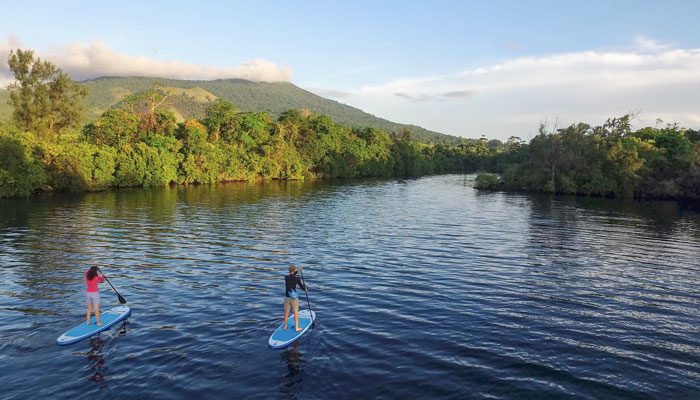
Mangroves are incredibly resilient and unlike most other species they are able to live in salt water and brackish water conditions. There are over 80 species of mangroves which live in generally inhospitable coastal intertidal zones. It’s not only their ability to survive in salty conditions which makes them unique, they can also survive in areas with low-oxygen soil, where slow moving tidal waters allow fine sediments to accumulate which would smother other species.
Why is it important?
Mangroves are an important part of our ocean eco systems. Research has shown that some fish species are 25 times more abundant on reefs close to mangroves than in areas without them – which may explain why Lembeh has such diverse and abundant marine life.
Mangroves also help to build up land, are nurseries for juvenile fish, crabs, birds and many other animals, protect sea grasses and reefs from becoming smothered by too much sand and they protect the coast lines from waves and storms.
Mangroves in the Lembeh Strait
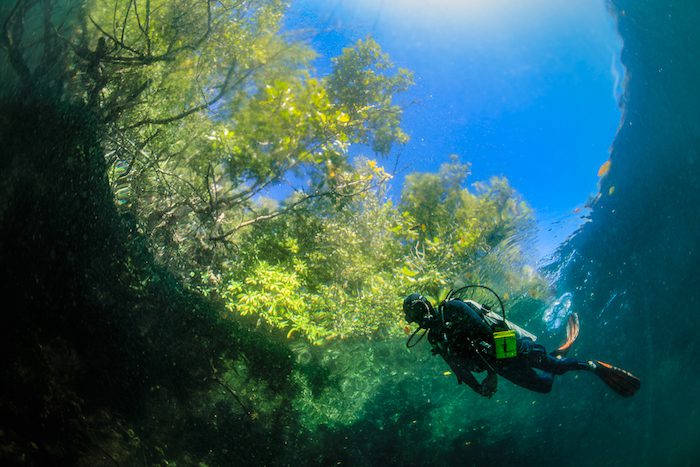
The mangrove forests around the Lembeh Strait are made up from several different species of mangrove trees and our favourite spot for exploring is around Batu Angus. Batu Angus can be dived, snorkelled or paddle-boarded depending on what you are hoping to see. The area is an extremely unique melting-pot, where reef and rainforest meet and there is nothing quite like swimming along a shallow coral reef and looking up to see the mangrove trees over head.
Bird life
If you are hoping to see some of North Sulawesi’s bird life then we recommend taking one of our paddle boards (from the boat) which allows you to glide silently through the water without disturbing the birds which are nesting there. Our paddleboards are exceptionally wide to give them greater stability in the water but if you don’t want to stand up, you don’t need to.
They can be used and paddled like a kayak with the rider sitting on them – they can also support two people if you’d prefer to go tandem. Species of bird that we commonly see at Batu Angus include: 4 species of kingfisher (Sulawesi dwarf, great billed, sacred and greenbacked), yellow billed malkoha, Pacific swallows, little heron, sooty headed bulbul, chestnut munia and both the crimson and olive backed sunbird.
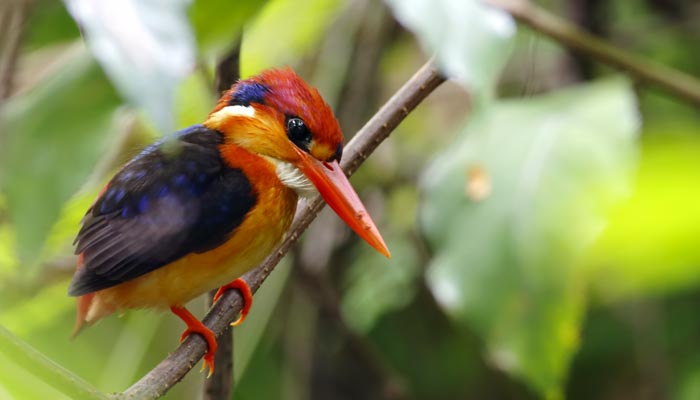
Sulawesi Dwarf Kingfisher in Lembeh Strait
Fish life
One of the more unique fish that we see at Batu Angus is the banded archerfish (Toxotes jaculatrix) and this is a great species to look out for when you are snorkelling close to the edge of the mangroves as they hide just below the surface, under the trees. Archerfish have a unique hunting method which involves them shooting water out of their mouths at insects flying above them. If their aim is correct they will hit the insect causing it to fall down on to the surface of the water where the archerfish is laying in wait for its prey.
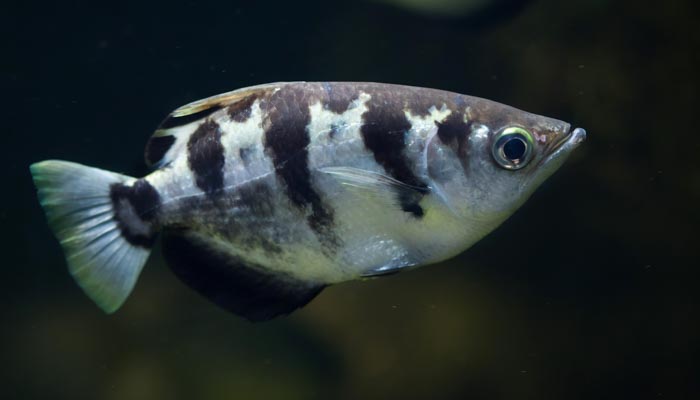
Banded archerfish (Toxotes jaculatrix), also known as the spinner fish.
Other wildlife species
As well as the inevitable birds and fish there are numerous other species that can be seem hiding out among the mangroves at Batu Angus. Giant monitor lizards and other smaller lizards live in the area and numerous species of land crabs make their homes in the fine sediment which is ideal for burrowing – for this reason crab eating macaque monkeys are also known to live here.
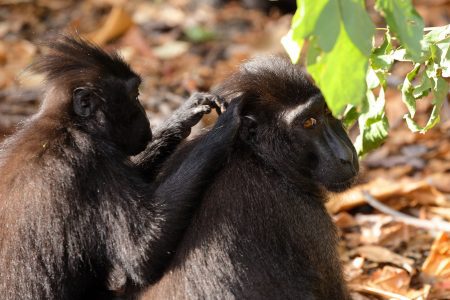
Diving and Underwater Photography
As well as being mesmerised by one of the most unique seascapes on the planet where the mangroves seem to merge with the reef, this is an incredible spot for underwater photography. The sunbeams filtering through the leafy overhead canopy create beautiful effects whereas capturing the mangroves roots’ can create images with an almost eerie-like feel. You won’t run out of photography opportunities.
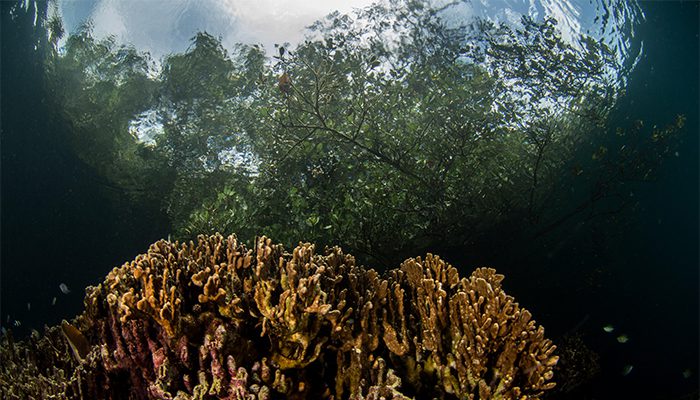
The diving conditions at Batu Angus are good all year round with little current and calm, still waters. If you’d like to explore Batu Angus and see a very different side to the Lembeh Strait it’s just a short boat ride away from Lembeh Resort and can be a morning or afternoon trip for diving, snorkelling, paddle boarding or a combination of all three.
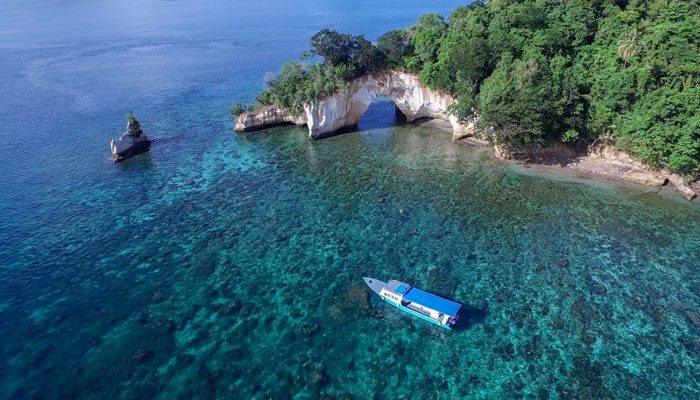
Batu Angus is just one of many sites around Lembeh so if you are looking for a mix of muck and reef diving it’s a unique spot that doesn’t disappoint. For more information about staying at Lembeh Resort and exploring some of the best dive sites in Indonesia contact us on reservations@lembehresort.com.


